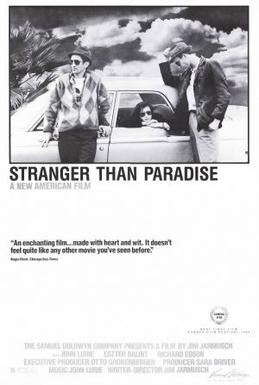Uh-oh, the dead are rising again.
Seriously, I’ve lost track of how many zombie films I’ve seen over the past ten years. This last decade was the decade when zombies went mainstream and I have to admit that I have mixed feelings about it. Zombies have become so overexposed that they’re no longer as scary as they once were. I mean, there’s even PG-rated zombie movies now! How the Hell did that happen? Everyone’s getting in on the act.
There were a brief flurry of excitement when Jim Jarmusch announced that his next film would be a zombie film. Myself, I was a bit skeptical and the release of a terrible trailer didn’t really help matters. The fact that the film was full of recognizable names also made me uneasy. Would this be an actual zombie film or would it just be a bunch of actors slumming in the genre? The film opened the Cannes Film Festival and received mixed reviews. By the time it opened in the United States, it seemed as if everyone had forgotten about The Dead Don’t Die. It was widely chalked up as being one of Jim Jarmusch’s rare misfires, like The Limits of Control.
Last month, I finally watched The Dead Don’t Die and you know what? It’s a flawed film and yes, there are times when it even becomes an annoying film. That said, I still kind of liked it.
In The Dead Don’t Die, the Earth’s rotation has been altered, the result of polar fracking. No one seems to be particularly concerned about it. Instead, they’re just kind of annoyed by the fact that the sun is now staying up in the sky a bit longer than usual. Cell phones and watches stop working. House pets abandon and occasionally attack their owners. In the rural town of Centerville, the dead rise from their graves and start to eat people. Whether or not that’s connected to the Earth’s rotation is anyone’s guess. (I like to think that the whole thing about the Earth’s rotation being altered was Jarmusch’s homage to Night of the Living Dead‘s suggestion that the zombies were the result of space radiation.)
We meet the inhabitant of Centerville. Zelda (Tilda Swinton) is the enigmatic mortician. Bobby (Caleb Landry Jones) is the horror movie expert. Farmer Miller (Steve Buscemi) is the red-hatted farmer who hates everyone. Zoe (Selena Gomez) is the traveler who is staying at the run-down motel with two friends. Cliff Robertson (Bill Murray) is the police chief who wants to save everyone but Farmer Miller. Ronnie (Adam Driver) and Mindy (Chloe Sevigny) are police officers. They’re all in the middle of a zombie apocalypse but very few of them seem to really be that surprised by any of it.
Throughout the film, we hear Sturgill Simpson singing a wonderful song called The Dead Don’t Die. Cliff demands to know why the song is always one the radio. Ronnie replies that it’s the “theme song.” Ronnie, we discover, has an answer for almost everything. He explains that he knows what’s going to happen because he’s the only one that “Jim” allowed to read the entire script. Cliff isn’t happy about that.
That’s the type of film that The Dead Don’t Die is. It’s an elaborate in-joke, a zombie movie about people who know that they’re in a zombie movie but who are too detached to actually use that information to their advantage. The script has been written so they have no choice but to do what the script says regardless of whether it makes them happy or not. It’s a clever conceit, though a bit of a thin one to build a 103-minute movie around.
As I said, the film can occasionally be an endurance test. Everyone is so deadpan that you actually find yourself getting angry at them. But, whenever you’re on the verge of giving up, there will be a clever line that will draw you back in or the theme song will start playing again. Bill Murray and Adam Driver are fun to watch and Driver reminds us that he’s actually a good comedic actor. (In the year of Marriage Story and Rise of Skywalker, that can be easy to forget.)
It’s a flawed film and definitely not one of Jim Jarmusch’s best. At the same time, though, The Dead Don’t Die is not as bad as you may have heard.

